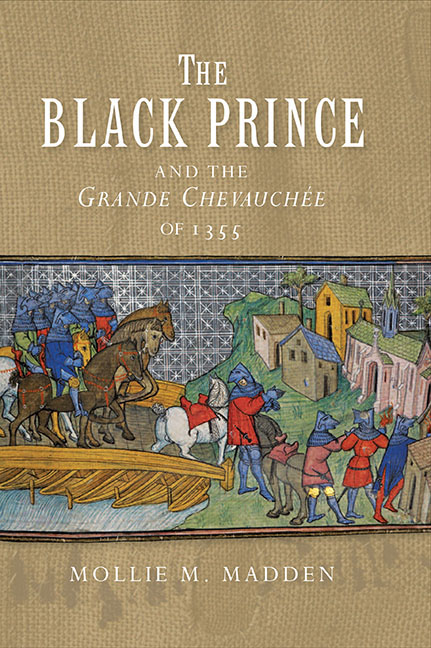Book contents
- Frontmatter
- Dedication
- Contents
- List of Illustrations
- Acknowledgements
- List of Abbreviations
- A Note on Measurements
- Map
- Introduction
- 1 The Preparations for the Chevauchée: England's Existing System of Purveyance
- 2 A Competent Military Force: England's Existing System of Recruitment
- 3 The Campaign to Narbonne: An Efficient System of Supply
- 4 The Return to Bordeaux: A Test of Endurance
- 5 After the Campaign
- Conclusion
- Appendix 1 Ships of the Prince's Fleet
- Appendix 2 Edward of Woodstock's Army
- Appendix 3 The Prince's March
- Appendix 4 Financial Tables
- Bibliography
- Index
- Warfare in History
4 - The Return to Bordeaux: A Test of Endurance
Published online by Cambridge University Press: 17 October 2019
- Frontmatter
- Dedication
- Contents
- List of Illustrations
- Acknowledgements
- List of Abbreviations
- A Note on Measurements
- Map
- Introduction
- 1 The Preparations for the Chevauchée: England's Existing System of Purveyance
- 2 A Competent Military Force: England's Existing System of Recruitment
- 3 The Campaign to Narbonne: An Efficient System of Supply
- 4 The Return to Bordeaux: A Test of Endurance
- 5 After the Campaign
- Conclusion
- Appendix 1 Ships of the Prince's Fleet
- Appendix 2 Edward of Woodstock's Army
- Appendix 3 The Prince's March
- Appendix 4 Financial Tables
- Bibliography
- Index
- Warfare in History
Summary
The Prince's army halted at Narbonne, about 114 miles (184km) from Toulouse, most of which distance was traveled along the Via Aquitania. This was the furthest east the army marched, although a few raiding parties did venture a bit farther. After the halt at Narbonne, the Anglo-Gascon army turned for Bordeaux. The return march was more arduous than the outward one from Bordeaux to Narbonne. The days grew shorter: only 9.7 hours of daylight in Narbonne on 10 November and 8.9 daylight hours by the time the army reached La Réole on 2 December. The speed was faster, the rests were fewer and the French forces were in pursuit.
The Anglo-Gascon army reached Narbonne on Sunday 8 November. It had covered an impressive distance (300 miles [482km]) in the 35 days since leaving Bordeaux on 5 October. Of those days, 12 were spent resting, some of which were necessary for both men and horses. The army, then, marched only 23 days during the campaign to Narbonne. It had maintained an average rate of 13 miles (21km) per day during the first half of the campaign, with a ratio of about one rest day for every two march days. The return to Bordeaux proceeded at an accelerated pace. The army marched 289 miles (465km) in 24 days total: 19 marching days and 5 halts. Its rate of march accelerated to an average of 15 miles (24km) per day, and the ratio of rest to march decreased to one rest day for almost every four days of marching. This acceleration was despite the increased baggage and had several causes, not least of which were the lateness of the season – it was already November and the army was 300 miles (482km) from Bordeaux and about 200 miles (321km) from friendly territory – and the pursuit by French forces. The march back, however, began with a halt.
The Anglo-Gascon Army at Narbonne
The Prince and his army halted at Narbonne on 8 November, where they remained encamped on the following day. According to the Prince, Narbonne was ‘a noble city and of fair size, greater than Carcassonne.’ Narbonne itself had some 30,000 residents and was 88 acres within the walls.
- Type
- Chapter
- Information
- The Black Prince and the Grande Chevauchée of 1355 , pp. 143 - 178Publisher: Boydell & BrewerPrint publication year: 2018

